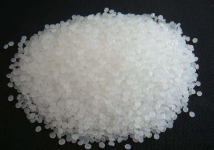read: 995 time:2025-06-27 11:56:33 from:化易天下
In the world of organic chemistry, understanding the acidity of various compounds is crucial. One of the common comparisons made is between phenol and its conjugate base, the phenoxide ion. The question often arises: Why is the phenoxide ion more acidic than phenol? This article delves into the intricacies of this comparison, providing a clear and detailed explanation that is both informative and optimized for search engines.
Before we explore why the phenoxide ion is more acidic than phenol, it's essential to define these two species. Phenol (C₆H₅OH) is an aromatic compound consisting of a hydroxyl group (-OH) attached to a benzene ring. When phenol loses a proton (H⁺), it forms the phenoxide ion (C₆H₅O⁻), which is the conjugate base of phenol. The key to understanding their relative acidities lies in the stability of these species and the electron distribution within the phenoxide ion.
A critical factor in determining acidity is the stability of the conjugate base. The phenoxide ion is more stable than phenol due to resonance stabilization. In the phenoxide ion, the negative charge on the oxygen atom is delocalized over the aromatic ring through resonance. This delocalization distributes the negative charge across several atoms, reducing the overall energy and stabilizing the ion. In contrast, phenol itself does not have this level of resonance stabilization because the hydroxyl group's ability to donate electrons to the ring is weaker when it still holds onto its proton.
The extended resonance in the phenoxide ion significantly contributes to its increased acidity. Since a stable conjugate base implies a stronger acid, this explains why the phenoxide ion is more acidic than phenol.
Another factor influencing the acidity of phenol and its conjugate base is the inductive effect. The benzene ring in phenol has a slight electron-withdrawing effect due to its sp² hybridized carbons. This effect is not as pronounced as resonance but still plays a role. When phenol loses a proton, the resulting phenoxide ion can stabilize the negative charge better due to the electron-withdrawing nature of the benzene ring. This further stabilizes the phenoxide ion, making the deprotonation of phenol (and thus the formation of the phenoxide ion) more favorable.
Hydrogen bonding also affects the acidity of phenol. In phenol, the hydroxyl group can form hydrogen bonds with water molecules, stabilizing the molecule in its protonated form. However, once phenol loses a proton to form the phenoxide ion, this hydrogen bonding is no longer a factor, and the phenoxide ion is stabilized by resonance and inductive effects instead. This shift in stabilization mechanisms upon deprotonation highlights why the phenoxide ion is more acidic than phenol.
In summary, the phenoxide ion is more acidic than phenol due to a combination of resonance stabilization, inductive effects, and the absence of hydrogen bonding in the deprotonated form. These factors collectively explain the greater acidity of the phenoxide ion, making it a more stable and favorable species in an aqueous solution.
By understanding these underlying principles, chemists can better predict the behavior of phenol and its derivatives in various chemical reactions, particularly in organic synthesis and acid-base chemistry. The insights gained from analyzing why the phenoxide ion is more acidic than phenol can also be applied to other aromatic compounds and their corresponding conjugate bases.

Jincheng Petrochemical's 300000 ton polypropylene plant successfully trial production, 2024 polypropylene market analysis

The ABS market remains sluggish, what is the future direction?

Market differentiation of bisphenol A intensifies: prices rise in East China, while prices generally decline in other regions

The production method and process flow of silicone acrylic lotion, and what are the common raw materials